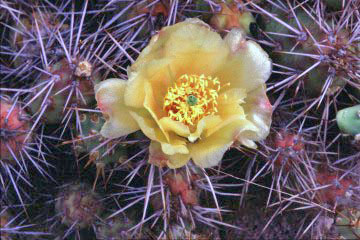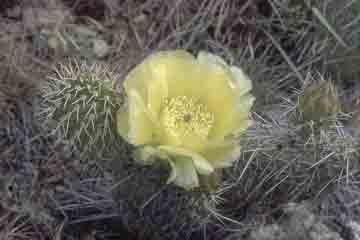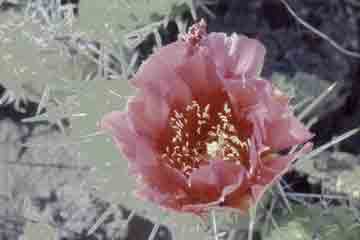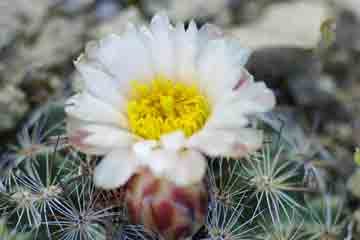




Home | Next | Previous | Index | Purchase book
Idaho Mountain Wildflowers
Cactus Family, Cactaceae
Cactus Family: Cactaceae: The Swedish botanist Carl von Linné (1707-1778), known as Linnaeus, published his Species Plantarum, the basis for today’s system of binomial plant classification, in 1753. Challenged to find names for plants, he often used ones mentioned by ancient writers. He knew of American cacti, and gave them the Greek name kaktos believing that they were related to a relative of the artichoke that the Greeks knew by that name. Later, the cacti were classified as a separate family of about 1700 species. They are New World plants, ranging from British Columbia to the southern ends of Chile and Argentina. While closely related to other flowering plants, cacti have adapted to the extremes of heat and dryness of desert environments. In most, the leaves have been replaced with spines, and photosynthesis goes on in the fleshy stems. Some bear edible fruit. The stems take many forms: round, flattened, cylindrical, etc., and are often ribbed. The flowers are usually solitary, often showy, with many sepals, petals, and stamens.
|
Brittle Cactusm, Opuntia
fragilis (Nutt.) Haw. The small ground-hugging brittle cactus
grows as high as the montane zone, nestling against exposed rocks that hold
the day’s heat. At higher elevations the plants—usually
green—take on a pronounced reddish hue. The name, fragilis, reflects
the ease with which segments break off the main stem and attach themselves
to passers-by. Showy flowers last only a day or so, followed by spiny red
fruit.
|
|
 |
Spiny prickly pear, Opuntia polyacantha Haw. (left, right) The spiny cactus favors desert-like surroundings, growing to fairly high elevations. The flat stem joints are covered with many spines, the meaning of polyacantha. Attractive flowers range from a light yellow to bright red. Opuntia polyacantha is found throughout the western United States and Canada. One might guess that the name opuntia was derived from a Native American word, but no, it was that of a now unknown plant that grew near the city of Opus in ancient Greece. |  |
|
Nipple cactus, Escobaria missouriensis (Sweet) D. R. Hunt var. missouriensis (left). The nipple cactus in Idaho is restricted to a few mountain valleys that drain into the Salmon River in Custer County. Often, only the flower-bearing portion extends above ground level so it is a plant that is easily missed. Its attractive, yellow-centered flowers are followed by small red fruit. Until fairly recently, the nipple cactus was classified as Coryphantha missouriensis, a name used in older guide books. An earlier name, Mammilaria, took note of the plants’ rounded ,spine-bearing projections that explain the name, “nipple cactus.” Escobaria, honors Mexican brothers, Numa Pompilio Escobar Zerman (1874-1949) and Romulo Escobar Zerman (1882-1946). (See California Plant Names: www.calflora.net/botanicalnames.) | |
Home | Next | Previous | Index | Purchase book